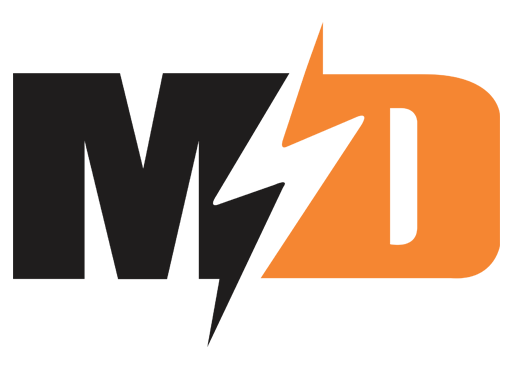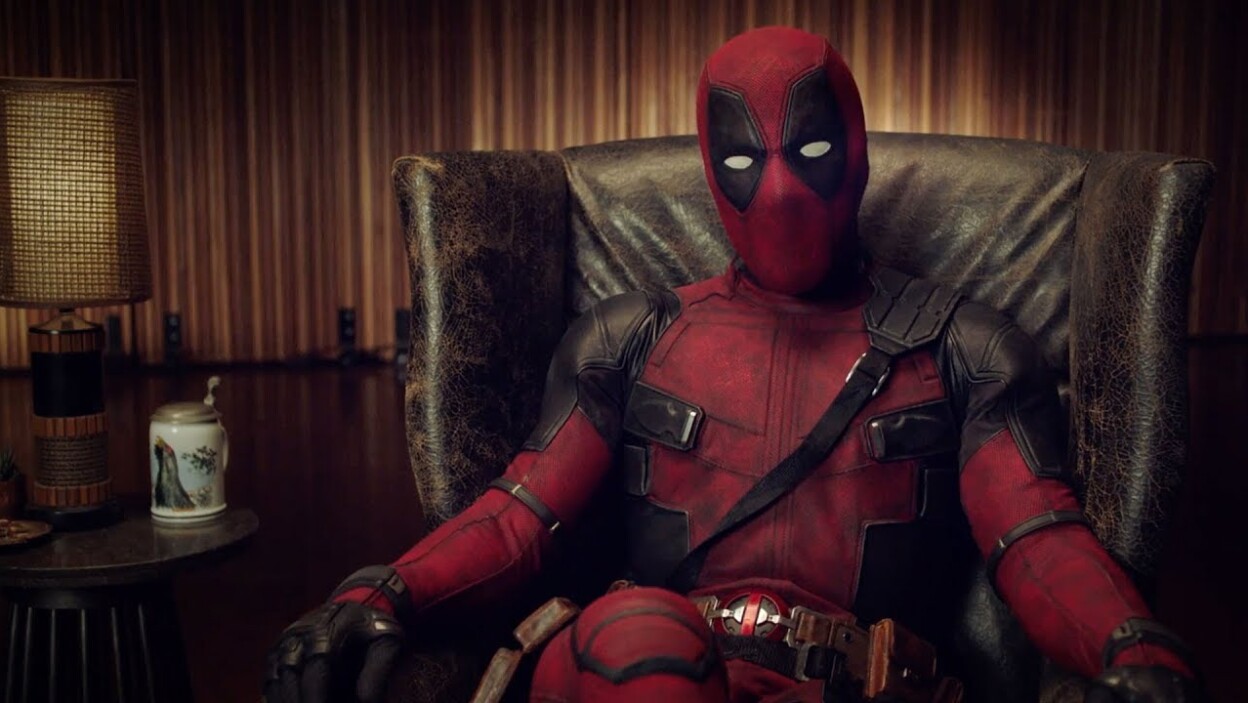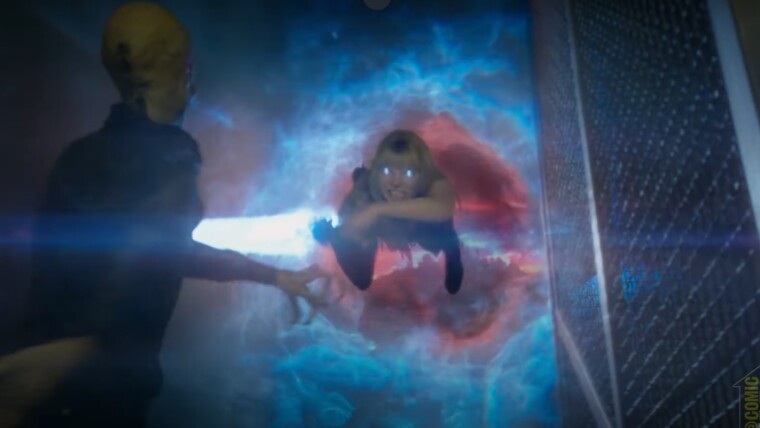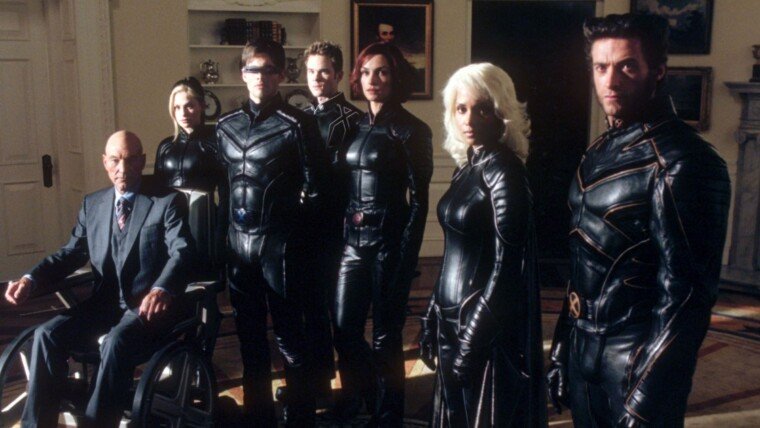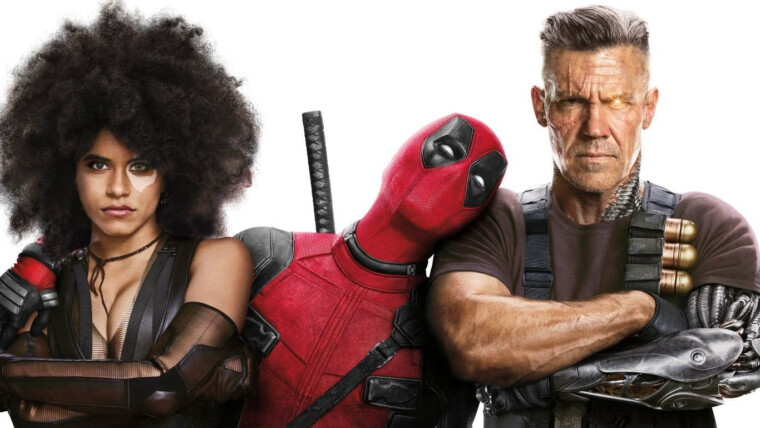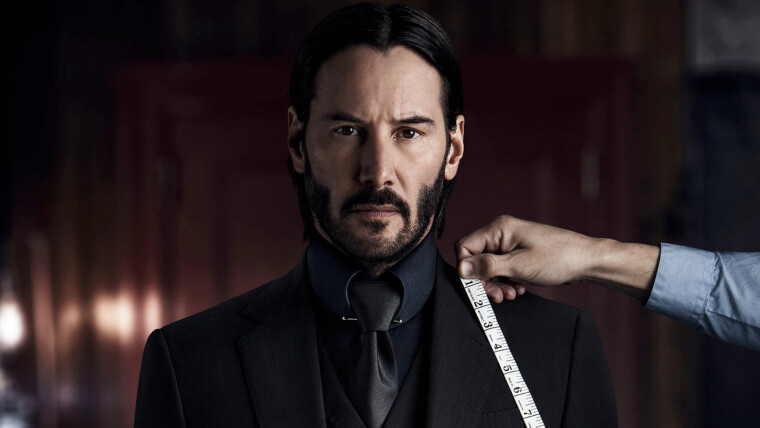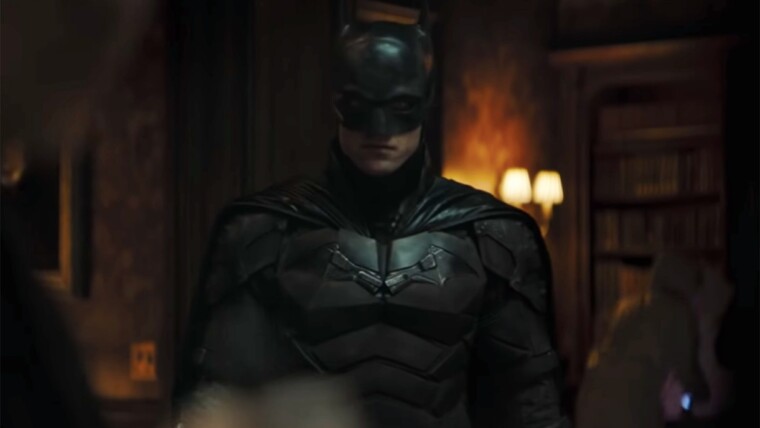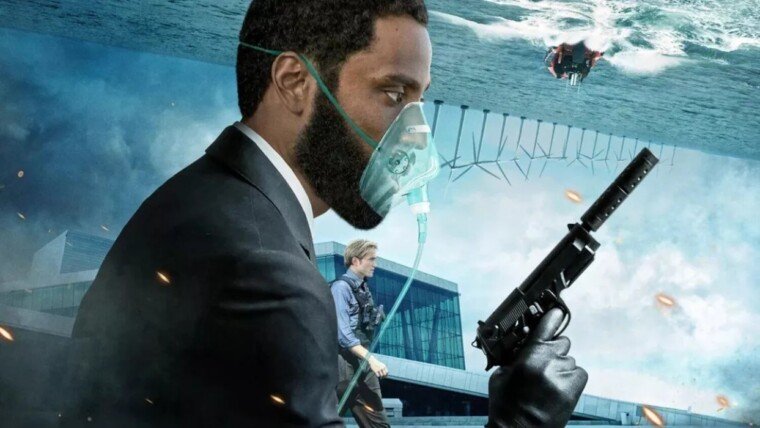This is a spoiler-heavy article. If you’d like to read our SPOILER-FREE review, you can click right here.
Parodies are double edged swords and, contrary to their playful nature, a lot of hard work to make. This is due to the fact that they have to perform an enormous balancing act between poking fun at a particular genre while still working within the confines of it as well. Western philosopher Nelson Goodman proposes that though a parody ridicules a subject, it also ascribes a sort of cultural significance to it. So unlike satires that are used to humiliate or ridicule a particular genre or ideology (Monty Python’s Life of Brian), Goodman asserts that parodies are in a way celebrations of the very genre they mock. Funnily enough, film parodies themselves have become a subcategory of the film genre comedy. And like any genre, there is what exemplifies the very best of it like Naked Gun with its witty take on spy films, Edgar Wright’s hilarious deconstruction of action films in Hot Fuzz and pretty much anything Mel Brooks has made. Then you have the lowest common denominator with woefully unfunny and uninspired films like Meet The Spartans, The Starving Games and everything The Wayans have ever made!

The first Deadpool was a showstopper and a proof of concept that superhero films could be brilliant parodies of themselves…while still excelling as one. The target of lampoon of the first Deadpool were the ideas of heroism, justified violence and the more sanitized and edgier aspects of the genre. From the uber ultraviolence to the blatant disregard of decency Wade shows as a presumed role model to shots directed at the studio making it, Deadpool is an epic reflection on the state of 21st century blockbuster cinema. And how does Deadpool 2 follow up? Well, like any sequel it ups the ante. Not just content with going after the genre but the entire industry, its own fans and even the idea of narratives itself. It’s no secret that it’s a good movie (Dash certainly thought so) but it’s more than that. It’s a postmodern piece of art and this is an analysis on Deadpool 2.
Of Broken Eggs and Needless Cameos.
 A large part of pop culture today relies on intertextuality which is the relationship between text with other forms of text. The clearest example would be the Marvel CInematic Universe (MCU) and how their films are interconnected. These connections can be established through cameo appearances from characters, carefully laid out symbols or objects that hints at a wider world (easter eggs) or the casual namedrop. As a post-Avengers society, we’ve grown obsessed about these connections, even forming a sort of quasi-academic sphere discussing them. Deadpool 2, well aware of the current cultural climate, makes it clear in the very beginning what it thinks about this obsession. The film begins with a ballerina music box of an impaled Logan dancing and spinning to happy music. A clear mockery at the narrative device of easter eggs. In the film there a ton of references to DC, Disney, Marvel and other action movie properties. All of them used for comedic effect. The film had me in stitches when they made that Martha and Star Wars incest joke. Nothing is sacred to this film. It was a delight to see fans in the cinemas overthink what these namedrops meant. Nothing, friend!
A large part of pop culture today relies on intertextuality which is the relationship between text with other forms of text. The clearest example would be the Marvel CInematic Universe (MCU) and how their films are interconnected. These connections can be established through cameo appearances from characters, carefully laid out symbols or objects that hints at a wider world (easter eggs) or the casual namedrop. As a post-Avengers society, we’ve grown obsessed about these connections, even forming a sort of quasi-academic sphere discussing them. Deadpool 2, well aware of the current cultural climate, makes it clear in the very beginning what it thinks about this obsession. The film begins with a ballerina music box of an impaled Logan dancing and spinning to happy music. A clear mockery at the narrative device of easter eggs. In the film there a ton of references to DC, Disney, Marvel and other action movie properties. All of them used for comedic effect. The film had me in stitches when they made that Martha and Star Wars incest joke. Nothing is sacred to this film. It was a delight to see fans in the cinemas overthink what these namedrops meant. Nothing, friend!
The film doesn’t just stop at verbal and subtle visual cues mind you, they flat out begin messing with our notion of continuity. The beginning of the film and the modern setting highly implies that the film takes place after Logan and or at least sometime around it. Like a fool, I was still trying to put together where this film fits in the timeline. That was before Deadpool 2 pulls one hell of a cameo prank on the audience. Colossus allows Deadpool to hang around the X-Mansion after Red is feeling blue about the loss of his lover, Ness. He’s riding on Professor X’s wheelchair and cracking wise about the various X-Men members. As he walks casually through the hallway and right before our very eyes a very alive Charles Xavier, Beast and a whole roster of other X-Men shutting the door in annoyance.

That was a massive reveal that the film just liberally ignores and trucks along. My mind began racing about how any of these characters could be alive if this film takes place around Logan. Theories of time travel and alternate universes came rushing in and that’s when I realized an important fact. None of it matters. It was a joke at our expense. The way we consistently analyse these films trying to get the jump on what the next one will be was brilliantly revealed in that scene. After that, I had an entirely new mode to the film. I treated every potentially universe expanding element as a joke. Everything from the Hope Summers reference, who is seen in comics as the foreseen mutant messiah, to the Mr Sinister Essex House possibility. The film was playing with our expectations and deconstructing it and I love it!
Narrative Nonsense.
 Since time immemorial, there’s been an expectation for sequels to be bigger and better than their predecessors. Empire Strikes Back has bigger stakes and a heavier dramatic tone that Star Wars. Every film in the Fast and Furious franchise gets more ridiculous with each new instalment, amping up their action sequences to logic destroying proportions. They not only break road laws but the laws of physics itself! Deadpool 2 is both a celebration and a giant middle finger to that notion. Right after a bloody montage of Deadpool carving his way through crime lord after crime lord, the film proceeds to play into the tragic hero cliché. Just as Wade and Ness have decided to take the plunge and have kids, Ness is tragically murdered by a group of hitmen in their apartment. Her death inspires the Merc with a Mouth to go on a spiritual journey to save a kid named Russell a.k.a Firefist from a life of murder and the cyborg mutant killer Cable. All while learning what it means to have a family. All of that sounds pretty heavy, doesn’t it? Though the film does follow through with most of its themes and ultimately has a sweet message at the end, how it gets there is pretty unorthodox. Which brings me to X-Force.
Since time immemorial, there’s been an expectation for sequels to be bigger and better than their predecessors. Empire Strikes Back has bigger stakes and a heavier dramatic tone that Star Wars. Every film in the Fast and Furious franchise gets more ridiculous with each new instalment, amping up their action sequences to logic destroying proportions. They not only break road laws but the laws of physics itself! Deadpool 2 is both a celebration and a giant middle finger to that notion. Right after a bloody montage of Deadpool carving his way through crime lord after crime lord, the film proceeds to play into the tragic hero cliché. Just as Wade and Ness have decided to take the plunge and have kids, Ness is tragically murdered by a group of hitmen in their apartment. Her death inspires the Merc with a Mouth to go on a spiritual journey to save a kid named Russell a.k.a Firefist from a life of murder and the cyborg mutant killer Cable. All while learning what it means to have a family. All of that sounds pretty heavy, doesn’t it? Though the film does follow through with most of its themes and ultimately has a sweet message at the end, how it gets there is pretty unorthodox. Which brings me to X-Force.

When I heard that Deadpool 2 was introducing X-Force into their universe, I was pumped. X-Force is basically black-ops X-Men, a group of superpowered anti-heroes with no qualms about killing. When I saw them on screen looking absolutely badass only one thought went through my mind: All of them are gonna die horribly. I was wrong, Domino played by Zazi Beetz survived. The X-Force was a big part of the film’s marketing material so to see them get absolutely eviscerated within the first few minutes of their arrival was hilarious. They didn’t meet their end by a rogue menace or giant explosion but by the wind. Their parachutes were caught in a draft and each of them landed in less than convenient positions. Peter, you shall be missed. Deadpool 2 does not shy away from bait-and-switching the audience all in the name of parodying the common sequel trope of escalation. Admittedly I was a little sad that we weren’t getting X-Force but those gut-busting moments in which the team was unceremoniously cut in their prime was comedic gold.

In a twist at the end that even I didn’t see coming, Deadpool 2 delivers on its emotional stakes, at least for a little while. At the climax of the film, Deadpool sacrifices himself to save Russell from Cable, preventing the little firestarter from murdering Cable’s family. But as he lays dying there on the ground with friends around him, he still manages to make it awkward as all hell. This sacrifice touches Cable’s heart and he proceeds to travel back in time to give Deadpool back Ness’ anniversary gift, a lead skeeball token which blocks the bullet from fatally injuring Wade. Thus making the entire sacrifice all for nothing. As for comeuppance, the evil, religious (and probably paedophilic) principal at the end meets his untimely end at the hands of a bloodthirsty Dopinder. Deadpool calls this karmic act of retribution as it is, a predictable trope that leaves the audience feeling cathartic about the whole affair. The ending is a twisted imitation of what should have been a powerful and poignant moment, instead, it trivializes every single one of those beats.
4th Wall Breaking Foolery.

Throughout the film, Deadpool complains about the writing every chance he gets. Calling convenient circumstances that work out, like Domino’s luck power, lazy writing and critiquing the writers and producers’ lack of imagination. Deadpool 2 uses these moments to make funny but insightful comments about the state of comic-book movies. This is seen when Deadpool is shown being envious of the critical acclaim that films like Logan get for being complex and dark due to its R-Rated status, claiming to pave the way for the film. He demands that he gets a dramatic and complex role as well. These breaks in the drama to directly address the structures at play are not entirely new. We’ve seen in it films like Monty Python’s Holy Grail and 22 Jump Street.

These moments not only exists within the unfolding story but also within the more technical aspects of the product. During the intro credits of the film, we see Deadpool 2 irreverently use the sequence to poke fun at the studios and creators of the film, calling the writers “The Real Villains”. The outro sequence also has Marvel Studios being called out as a cash cow for the amount of money their films have made over the years. The script itself is co-written by Ryan Reynolds who was actively involved in a fan-film project in the past to get the first Deadpool greenlit by the studio executives. Therefore some of the jabs the film takes at the studio could be indicative of how he genuinely feels about the state of comic-book films. A little payback for how they treated the character and property in the past, X-Men Origins: Wolverine tends to come to mind. The best part is he can afford to do it since the first film was a financial and critical success.
It really is fascinating to watch how the character Deadpool, who at times also serves as a mouthpiece for Reynolds, uses the medium he exists in as his own play thing. The novelty of the created cheekily rebelling against the creator and powers-that-be serves as more than just a clever and amusing style of fiction. The production process and the real life drama that is reflected in these less than subtle acts of subversion are a sort of revolt on the part of the author against a larger system. Knowing about the history and actual struggle behind the film not only illuminates us about the intricacies of movie production but also provides a greater and more grounded context to the humour on display. Nothing exemplifies this rebellion clearer than Deadpool 2’s post-credit scene.
Is the post-credits scene considered canon?

The film cynically uses its final moments to take a sledgehammer to the one thing that studios and producers seem to love the most, reboots and adaptations. It could not have been timely in this age of countless nostalgia trips and recycled popular intellectual properties. Studios have been using beloved properties of bygone eras for years as cheap cash cows to turn a quick profit, I’m looking at you Terminator: Genisys. So to have the post-credit scene “fix the timeline” with Deadpool killing his previous iteration was a tremendous treat. He himself being a sort of product of a reboot turning on the very concept of it was the last bit of icing on the cinematic cake. In one of the scenes, he travels back in time to when Wolverine meets his more silent doppelganger in X-Men Origins. He proceeds to finally murder his silent clone with a barrage of bullets. Everyone around me was utterly gobsmacked. Did Deadpool rewrite the entire timeline of the X-Men? Is Peter going to return to X-Force since Deadpool went back to save him? Just as quickly as the questions came, they faded away as I remembered an important fact about this film. None of it really matter because Deadpool 2 has shown a strong propensity to break the rules, all in the name of comedy. In other words, it’s probably just an inside-baseball joke for fans and most likely not canon.

This sequence is also used as an analogy for Reynolds’ career. The film neatly ends with actor Ryan Reynolds holding up a Green Lantern script, believing this will be the thing that propels his career. He is then shot in the back of his head by Deadpool, who is also played by him. Oddly enough I found that quite endearing. It’s symbolic of the actor acknowledging the failures of his past and putting them to death. While this scene does not fully invalidate the existence of that green horrible CGI-heavy atrocity, it certainly does offer closure. At the end, it leaves the audience with the impression that Deadpool 2 is more than just a media product for mass consumption. It’s something near and dear to those involved in it who have something to say about the industry and themselves. Therefore, it’s fitting that the final victim of parody in Deadpool 2 is the star actor himself. The film really does go after everyone!
Needless to say Deadpool 2 succeeds in what it sets out to do, by both being an awesome action-comedy film and a thoughtful reflection of the state of cinema today. Unabashed in its fun ultraviolence and lack of reverence. Unrivaled in its witty critique of comic-book and cinema culture, Deadpool 2 is not a film you want to miss. Let’s hope much like dubstep, this series never dies.
